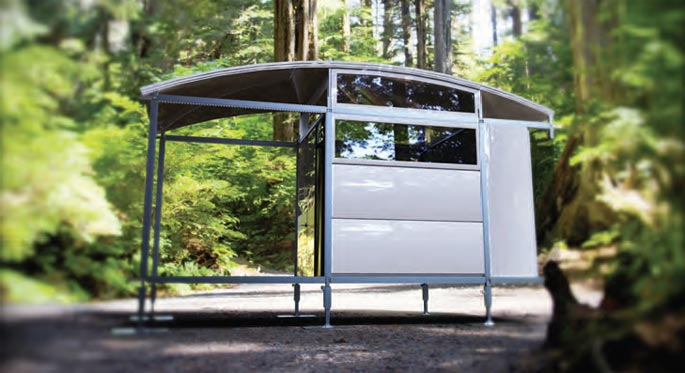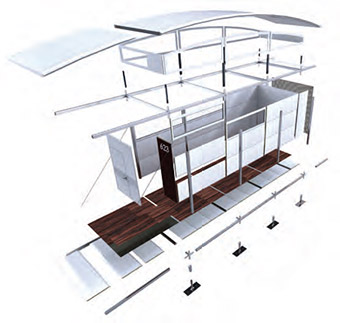Spotlight
Give Me Shelter
| USF News

Photo courtesy of Sean Verdecia
A portable dwelling designed by two USF alums could be the answer to sheltering displaced people in crisis around the world.
AbleNook is the brainchild of Architecture and Community Design graduates Sean Verdecia and Jason Ross. It requires no skill, no tools and only a few hours to assemble.
“In the heat of disheartening news and interviews with Katrina survivors, I decided to design a solution that would address the recurring problem of disasters everywhere,” says Verdecia. “I reached out to a like-minded friend and we began a research project to design a disaster relief solution. Our goal was to tackle every issue at hand logistically, rethink the problem from cradle to grave, and provide a sign of hope and security at the time people needed it most.”
The “rapidly deployable modular dwelling” is expandable and reusable. There’s full thermal insulation, adjustable leg jacks to handle wildly uneven terrain, and pre-wired electrical components. An arched roof channels and collects rainwater, while the bungalow design facilitates passive cooling for hotter climates. A small porch fosters a sense of community.

Photo courtesy of Sean Verdecia
Because the prefabricated modules and connections are shipped flat, they can be sent out to disaster areas in large numbers on trucks. The structures can be expanded to serve as schools, office space and for military operations. The smallest unit — at 20 feet in length and 13 feet in height, with a 10-foot ceiling — is comfortable.
When the pair shared their invention with their former architecture professor, Mark Weston, he encouraged them to visit with the university’s Technology Transfer Office. The office works with researchers and students to ready new inventions for licensing opportunities.
“When we first walked into the USF Patent Office all we truly had was a well-developed idea,” says Ross. “They saw the potential in it from the start and have never stopped supporting us. They are extremely knowledgeable in the patent process, and even helped us seek out the grant we used to construct the prototype.”
Now the pair is focused on raising funds for their new invention. They’re hoping to build a second prototype.
USF School of Architecture and Community Design Director Robert McLeod notes that the project displays qualities his program nurtures in its students.
“This is an exciting project for those of us at the School of Architecture and Community Design because it showcases two of our recent graduates as they apply the talent and array of skills developed here. They are able to bring a fresh approach to an ongoing problem and, in so doing, develop a product that offers an inventive housing solution. The flexible and intelligent system of assembly developed for the AbleNook project is an inspiration to current students at the SACD.”